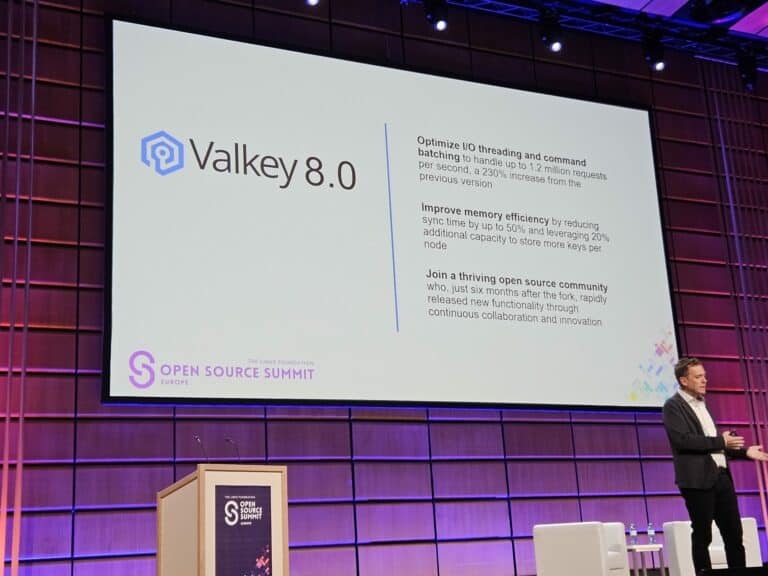Valkey 8.0 promises across-the-board improvements in performance, reliability, and observability over previous versions and, thus, Redis as well. At the Open Source Summit in Vienna, the Linux Foundation announced the latest version of this alternative to key-value store Redis, which was forked barely six months ago.
Valkey is an open-source, in-memory NoSQL data store and aims to build on the strengths of previous versions. That makes it sound like Valkey already has a long and rich prior history. That’s true, although ‘long’ is pushing it a bit, as the previous versions have all gone live in recent months. The new version 8.0 is the first major release since being forked from Redis. The latter has had a more limited license since version 7.4.
Setting an example
Not surprisingly, Valkey 8.0’s going live was an important announcement during this week’s Open Source Summit in Vienna. By adding or improving functionality in scalability, efficient resource utilization, and system monitoring, among other things, the Linux Foundation wants to use Valkey as an example of how quickly the open-source community can shift gears.
The open-source community grumbled about the eponymous company’s change in Redis’s license. This change meant that managed service providers were being sidelined.
Tip: Flight to Valkey appears to be response to removal of Redis’ open source license
One of the most notable improvements the community has implemented is the intelligent use of multi-cores and asynchronous I/O threading. According to the Linux Foundation, this increases throughput to an impressive 1.2 million requests per second on AWS r7g instances running on AWS’ Graviton3 processors.
The example using AWS is telling, as this company has contributed quite a bit to Valkey. This was done in large part by Madelyn Olsen, who is on the technical committee, having previously done the same for Redis. It is not only AWS that has thrown its weight behind Valkey; Google is currently courting the community for the right to install its Vector Search, just like AWS, which wants to do the same. Both companies are eager to add this functionality in light of its use for AI applications. According to an AWS spokesperson, this shows the ‘pent up’ desire of companies to add their contributions.
Mitigating data loss
In addition, Valkey 8.0 improves cluster scaling with automatic failover. This means the database automatically creates new shards (subsets of data) and distributes them to additional nodes without manual intervention. If a node fails, the system automatically activates failover, so the data on the failed node is replicated and remains available on other nodes. In addition, by replicating ‘migration states,’ Valkey mitigates data loss during data migration between nodes or during rearrangements thereof.
Dual-channel RDB (Redis Database) and replica backlog streaming have also improved the data replication process. This speeds up the process and provides faster system response when there is a high real-time demand for data. Across the board, these improvements should result in data that remains consistent and replicated correctly, with minimal data loss, even when hitting peak data demand.
Improved observability
In the area of observability, Valkey 8.0 provides comprehensive statistics per slot and per client. These include statistics for pub-sub-clients, rehash memory, event loop latency, and command-level heavy traffic logging. This helps users get a detailed look into system performance and resource utilization. Memory overhead has also been optimized in Valkey 8.0, saving up to 10 percent key storage.
Valkey 8.0 is now available for download from the official website valkey.io. Existing users can upgrade relatively easily directly through the source code or a pre-built container image.
Also read: Google Cloud adds graph and vector search features to Spanner database
